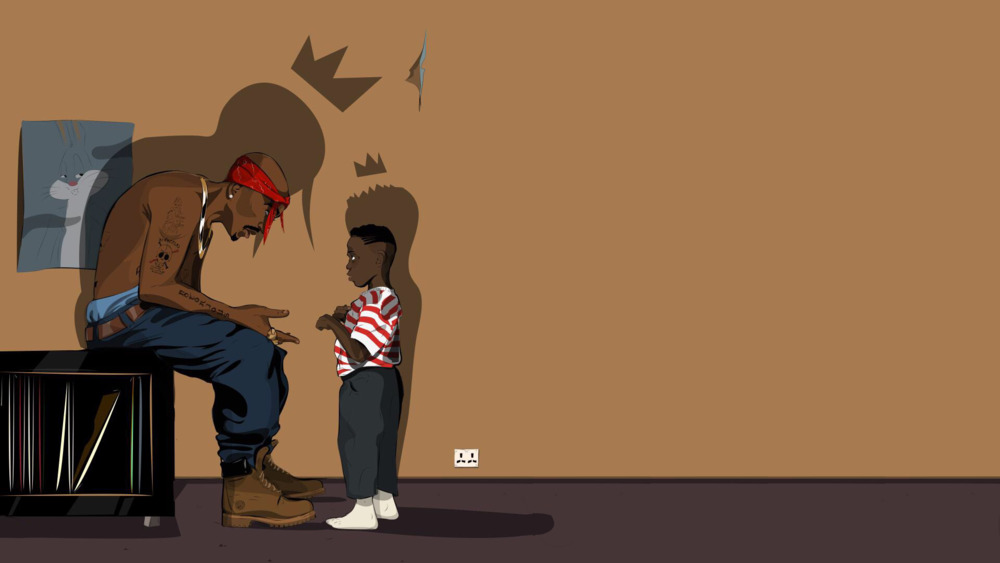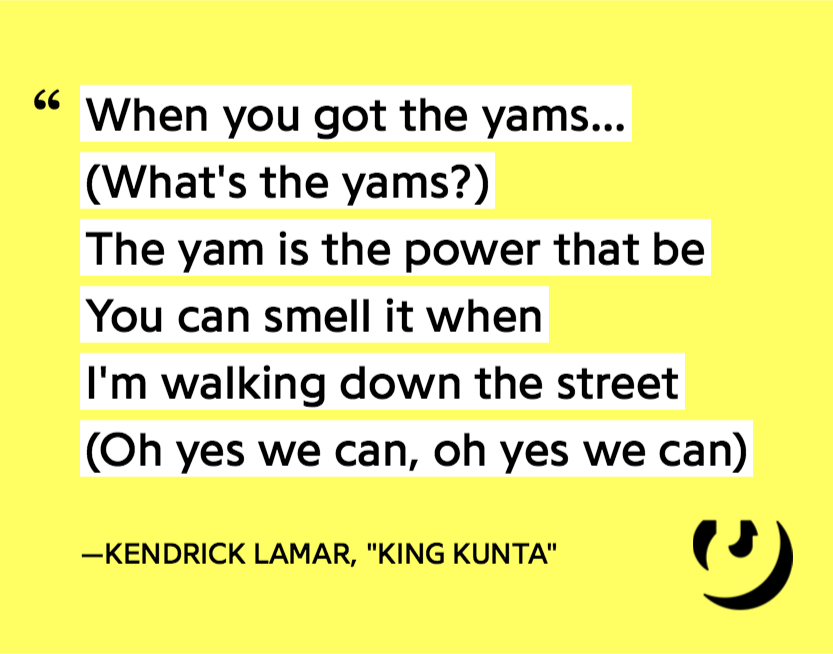7 Lyrics We Still Don’t Totally Understand From ‘To Pimp A Butterfly’
One year later, Kendrick still has us scratching our heads.
Kendrick Lamar’s To Pimp A Butterfly—a daring self-exploration of the Compton rapper’s post-good kid, m.A.A.d city psyche—has been much discussed and dissected since its release one year ago, on March 15, 2015.
Here at Genius, thousands of scholars have decoded the lyrics of TPAB via annotation—even Pulitzer Prize-winning author Michael Chabon tackled “The Blacker The Berry.” We’ve produced a few gems, but the era-defining opus still contains some unsolved mysteries.
Put on your thinking cap and press rewind to further decode Kendrick’s second classic.
1.
So…what’s the yams? That is the question everyone’s been asking since Kendrick dropped TPAB. Sure, Kendrick said, “The yam is the power that be,” but that’s still pretty abstract. Here’s our take:
In Ralph Ellison’s book Invisible Man, the yam is used as a symbol of authenticity; the protagonist famously declares, “I yam what I am.” Is Kendrick differentiating himself from the rappers he disses later in the verse by declaring his own legitimacy?

Yams are also a key ingredient in Southern cuisine and have significance in some parts of Africa as a sign of social status. In his novel Things Fall Apart, Chinua Achebe begins by documenting how a man’s worth in Igbo society was largely determined by his yearly yam yield. When Kendrick says he “got the yams,” he may be referring to money, power, and prestige—or simply a tasty soul food staple.
2.
While Genius scholars traced “I can dig rapping” to James Brown’s “The Payback,” it’s still unclear whether Kendrick had a certain someone (rhymes with “Blake”) in mind when he mentioned “a rapper with a ghost writer.”
In an interview with Rob Markman, Kendrick said this lyric is directed at new artists who have not established their credentials. Yet during his The Late Show With Stephen Colbert performance in September 2015—shortly after Meek Mill outed Drake for employing Quentin Miller’s writing services—Kendrick emphasized the “ghost writer” lyric, causing some to believe his Toronto rival was the intended target all along.
3.
This portion of “Alright” is only slightly easier to parse when put into context.
Earlier in the verse, Kendrick raps, “See my name is Lucy, I’m your dog,” from the perspective of Lucy—or Lucifer. Perhaps K. Dot is referencing Cerberus, the three-headed mythical hellhound that guards the underworld, by repeating “pet dog” thrice. Throughout the verse, it seems Kendrick rebuffs Lucy’s advances and by the end, makes her (the devil) his bitch.

4.
“Home” is open to interpretation on “Momma.” The obvious location is Compton, which Kendrick refers to throughout the song (and his discography). However, the following lyric seems to place Kendrick somewhere in Africa:
He looked at me and said, “Kendrick, you do know my language
You just forgot because of what public schools had painted”
On the final portion of the album-long poem, Kendrick says:
When trapped inside these walls certain ideas take roots, such as going home, and bringing back new concepts to this mad city
We all know the m.A.A.d city is Compton, so “home” may refer to the motherland—a byproduct of his 2014 journey to South Africa.

5.
Although President Obama named “How Much A Dollar Cost” as his favorite song of 2015, Kendrick name dropped him on the previous song, “Hood Politics.” The lyrics leading into the interlude provide additional context:
Ain’t nothin' new, but a flu of new Demo-Crips and Re-Blood-licans
Red state versus a blue state, which one you governin’?
They give us guns and drugs, call us thugs
Make it they promise to fuck with you
No condom, they fuck with you, Obama say ‘What it do?’”
Is Obama speaking to the black community or Congress? It’s hard to tell. Kendrick may be criticizing Obama for not doing more for black people, or he could be sympathizing with a black president who wants to bring about change but is continually impeded by Congress.

6.
The Holocaust is the most prominent atrocity in Germany’s history, but there were others that took place prior to World War II. Beginning in the early 1890s, Germany committed what’s now classified as the first genocide of the 20th century, killing nearly 100,000 Herero and 10,000 Nama people in modern day Namibia, a country on the southwest coast of Africa. Germany didn’t acknowledge the killings as “genocide” or “part of a race war” until July 2015, four months after Kendrick’s TPAB was released. Is this the savagery Kendrick references?
7.
The album’s final question prompts many more. Why does Tupac leave Kendrick hanging?
Genius scholars believe that Kendrick left the interview open-ended, allowing listeners to fill in the blanks and create their own perspective on the poem Kendrick recites for Tupac.

What other lyrics do you not fully understand? Feel free to drop them in the comments section below and click here to sign up and visit the To Pimp A Butterfly page to add knowledge.






